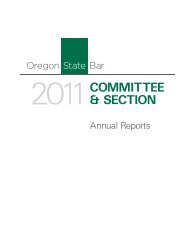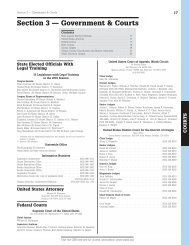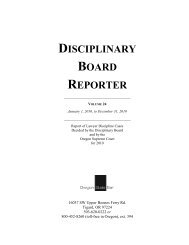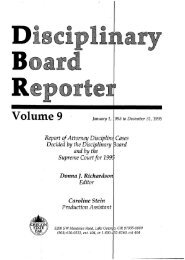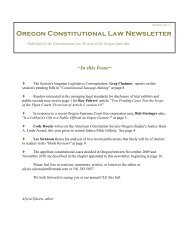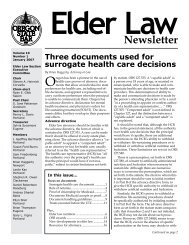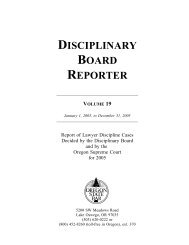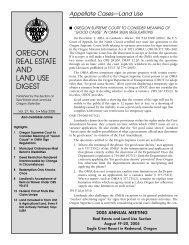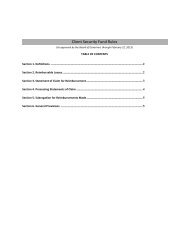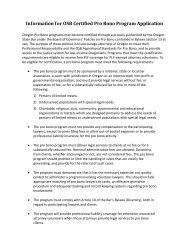MPT Grading Materials July 2010 - Oregon State Bar
MPT Grading Materials July 2010 - Oregon State Bar
MPT Grading Materials July 2010 - Oregon State Bar
Create successful ePaper yourself
Turn your PDF publications into a flip-book with our unique Google optimized e-Paper software.
Multistate Performance Test<br />
Model Answer<br />
In re Hammond<br />
represent after he was questioned by police. There are no facts—let alone “some evidence” or<br />
“probable cause”—to support a finding that he hired Walker to further any crime or fraud.<br />
Moreover, it is questionable what crime or fraud would be the basis for applying the Rule<br />
513 exception. Assuming, purely for the sake of argument, that there is evidence that Hammond<br />
set the fire at 20 South Main Street, he cannot be charged with arson under Fr. Criminal Code<br />
§ 3.01 (Arson of Building) because he owned the building that burned down. That statute makes<br />
it unlawful to damage by fire the building of another. Nor would § 3.02 (Arson of Building with<br />
Intent to Defraud an Insurer) support disclosure using the crime/fraud exception. Hammond<br />
hired Walker to represent him after the fire on May 10th. The Rule 513 exception applies when<br />
the lawyer is retained to enable the client to “commit or plan to commit” a crime or fraud. If the<br />
building was burned down with the intent of defrauding Mutual Insurance Company, that act<br />
occurred before Hammond retained Walker to represent him, and so the representation would not<br />
be in furtherance of a crime or fraud. See Sawyer. Finally, there is no evidence suggesting that<br />
there are grounds to charge Hammond under Fr. Criminal Code § 5.50 (Fraudulent Claims). No<br />
claim for the loss has been presented to Mutual Insurance. (It is notable that Robb involved a<br />
complicated financial fraud—manipulating the price of stock on the New York Mining<br />
Exchange. By contrast, filing a false insurance claim is hardly the type of fraud for which a client<br />
would need the assistance of an attorney to commit.)<br />
Even if this court were to apply the lower “some evidence” standard to trigger in camera<br />
review, the same result is warranted. To assume that Hammond hired Walker because he was in<br />
the midst of a fraudulent scheme simply begs the question because whether Hammond is so<br />
involved is the very question to be decided. Even innocent people are entitled to legal<br />
representation.<br />
Further, if this court were to require Walker to disclose her communications for the<br />
limited purpose of allowing the court to determine if the communications were privileged or nonprivileged,<br />
the result should be the same: this testimony should not be compelled over the<br />
client’s objection at a grand jury hearing. The ultimate burden of proof for defeating the<br />
attorney-client privilege—a preponderance of the evidence—cannot be met in this case. As was<br />
the case in Sawyer, any evidence supporting an inference that the attorney was retained to<br />
facilitate a crime or fraud will be offset by “an equally strong inference that [Hammond] retained<br />
[Walker] to ensure that his choices were informed.” Sawyer.<br />
21




